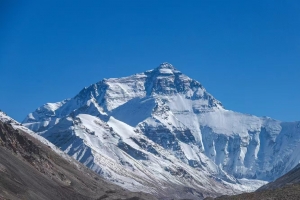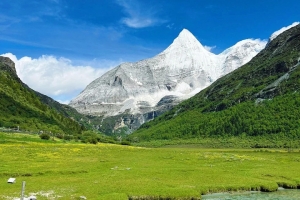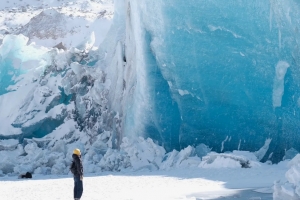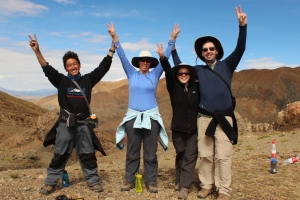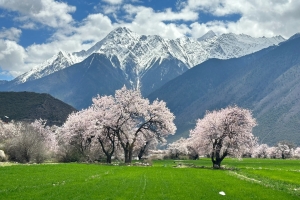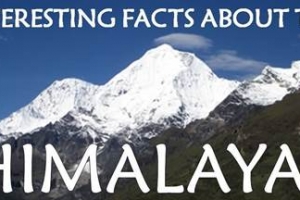Visiting Tibet from the United States is an unforgettable adventure: towering mountains, ancient monasteries, and a culture that feels suspended in another time. While there are no direct commercial flights from the US to Lhasa, the Tibetan capital, getting there is straightforward if you know the routes, paperwork, and smart connections. This guide explains the most practical and cost-effective routes from major U.S. departure cities, the visa and Tibet-permit process, travel options inside China and via Nepal, scenic alternatives (like the Qinghai-Tibet Railway), estimated flight durations and price bands, and tips to make the trip smooth and enjoyable.
Why There Are No Direct US → Lhasa Flights
Tibet’s international air links are limited: Lhasa Gonggar Airport receives inbound international travelers mainly through Chinese gateways or occasional flights from neighboring Nepal. For U.S. visitors this means planning two legs: an international flight to a Chinese hub (or Kathmandu), then a domestic flight or train eastward into Tibet. Because Tibet travel requires extra permits and must be arranged through licensed agencies, many travelers choose to book a full Tibet package that handles the paperwork and logistics for them.
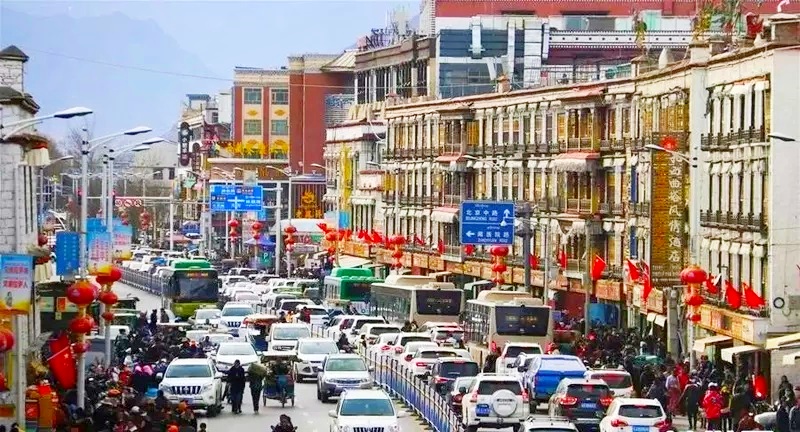
Lhasa City
Key Documents You Need Before Boarding
Passport and China Visa
Every U.S. citizen traveling to Tibet via China must first have a passport valid for at least six months and a Chinese entry visa. Apply for the China visa well before your departure; some permit-processing steps depend on having that visa on file.
Tibet Travel Permit (Tibet Entry Permit)
A Tibet Travel Permit (sometimes called the Tibet Entry Permit or Tibet Tourism Bureau permit) is mandatory for all foreign nationals visiting Tibet. Important: you cannot apply for this permit as an individual — it must be processed by a licensed Chinese travel agency on your behalf and is tied to an itinerary that lists the places you’ll visit. Plan at least a couple of weeks (ideally 2–3 weeks) for permit processing; during peak season or short-notice trips, expedited fees may apply.
Special Rules When Entering Tibet from Nepal
If you travel into Tibet from Nepal, note that some travelers must obtain a China group visa (issued through the Chinese Embassy in Kathmandu) rather than a normal single-entry China visa — and that process often requires group applications and can take a few working days. Rules can be stricter and procedures different than entering via mainland China, so plan carefully.
How To Reach Lhasa: Two Main Gateways
There are two practical international gateway options for U.S. travelers:
- Via Mainland China Hubs (Beijing, Shanghai, Guangzhou, Chengdu, Xian, etc.) – fly nonstop to a Chinese hub from the U.S., then transfer to a domestic flight or a scenic train to Lhasa.
- Via Kathmandu, Nepal – fly to Kathmandu (usually via a Middle Eastern or Asian transfer city), then take a short flight or overland route into Tibet.
Both routes are popular; which you choose depends on cost, time, scenic preference, and paperwork flexibility.
Flights from the US to China: Practical Routes, Times, and Price Ranges
Below are commonly used U.S. departure cities with example connecting arrangements into Tibet. Flight schedules and frequencies can change seasonally, so use this as a planning guide and confirm times/prices with airlines or your booking agent.
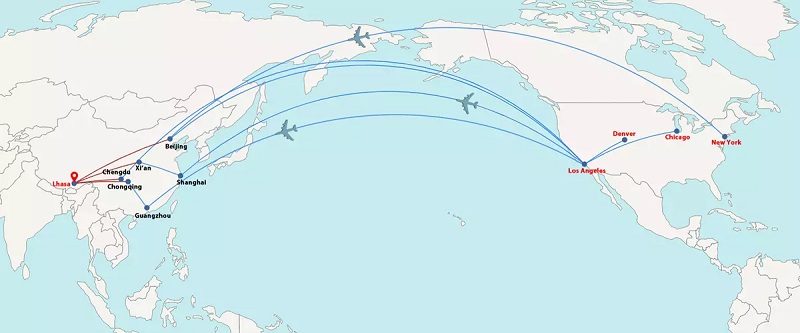
Flight routes from the US to Tibet
San Francisco – Beijing / Shanghai / Guangzhou
- SFO → Beijing (example: United UA 888) — nonstop transpacific flights linking San Francisco to Beijing make SFO one of the easiest U.S. gateways for Tibet travelers. Typical flight times are around 13–14 hours. Economy fares commonly range widely depending on season and advance purchase. (Example flight UA888 operates regularly on SFO–Beijing routes.)
After arriving in Beijing, travelers can either:- Take a domestic flight from Beijing to Lhasa (about 3.5–4 hours), or
- Board the famed Qinghai-Tibet Railway from Beijing (or Xining) for a multi-day scenic train experience into Lhasa.
- SFO → Shanghai (example: United UA 857) — similar flight durations (~14 hours). From Shanghai you can pick up a connecting flight to Lhasa or opt for rail routes that begin from eastern cities.
- SFO → Guangzhou (China Southern CZ 658) — this offers another hub option with onward flights or train connections into Tibet.
(Estimated economy price bands provided in your brief — use those ranges as a planning benchmark; fares fluctuate with seasonality and promotions.)
New York – Beijing / Shanghai
- JFK → Beijing (Air China CA 982) — flights from New York to Beijing usually run ~15–17 hours. From Beijing, domestic connections to Lhasa are frequent during peak tourism seasons.
- JFK → Shanghai (China Eastern MU 588) — another common route; from Shanghai passengers connect onward to Lhasa or to Xining for train connections.
Seattle – Beijing / Shanghai
- SEA → Beijing (Hainan HU 496) and SEA → Shanghai (Delta DL 281) options make Seattle a convenient West-Coast departure point for Pacific crossings. Typical flight durations are around 13–14 hours. (Frequencies vary by airline and season; some services operate only a few times weekly.)
Los Angeles – Beijing / Shanghai
- LAX → Beijing (Air China CA 984) and LAX → Shanghai (China Eastern MU 586) provide multiple weekly nonstops; expect transpacific durations in the 13–16 hour range depending on routing.
Detroit / Dallas and Other US Cities
- DTW → PVG (Delta DL 389) and DFW → PVG (American AA 127) are examples of long-haul nonstops that connect the U.S. heartland directly to major Chinese hubs, from which domestic connections to Lhasa are available.
From Chinese Hubs to Lhasa: Flights vs Train
Fly: Fastest Option
Domestic flights from Beijing, Shanghai, Chengdu, Guangzhou, Chengdu and Xian to Lhasa typically take 2.5–4 hours depending on origin. Lhasa Gonggar Airport (LXA) is well connected to major Chinese cities during peak season, and tickets can be bought via airlines or through a travel agency that handles permits. Flights into Lhasa are the fastest and most common choice for travelers on tight schedules.
Train: Scenic, Slow, Memorable
If you have more time and crave dramatic scenery, the Qinghai–Tibet Railway is an iconic option. The train traverses high plateau landscapes and reaches some of the world’s highest railway elevations. Trains to Lhasa run from places like Xining and Chengdu, and some long-distance routes originate in Beijing, Shanghai and Guangzhou — making the journey a once-in-a-lifetime scenic experience. Trains have oxygen supply systems and are a comfortable alternative for those concerned about altitude acclimatization en route.
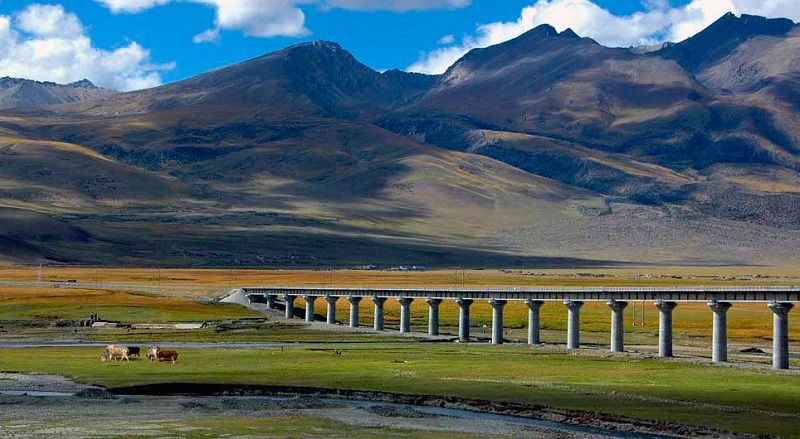
Qinghai–Tibet Railway
Routes via Kathmandu (Nepal) – Faster Geographically, But More Paperwork
Flying into Kathmandu and then onward to Lhasa is geographically shortest: the air leg KTM → LXA (Kathmandu to Lhasa) is roughly 1.5 hours. But there are important caveats:
- No direct U.S. → KTM flights — most U.S. travelers reach Kathmandu via a connecting city (Doha, Dubai, Istanbul, New Delhi, or Bangkok), adding transit time and cost.
- Limited KTM → LXA flights — services between Kathmandu and Lhasa are limited and seasonal; frequencies might be a few flights per week, often concentrated in peak months. Ticket prices for KTM → LXA can be high relative to Beijing/Lhasa internal sectors.
- Permit/visa complexities — entering Tibet via Nepal often requires a China group visa or special arrangements processed through the Chinese Embassy in Kathmandu, and group minimums and invitation letters may apply. That makes this route less convenient for independent solo travelers.
Because of these constraints, relatively few American travelers choose Nepal as their main gateway to Tibet, but for those seeking a Himalayan overland adventure or a shorter air hop, Nepal remains an attractive option.
Flights to Tibet from the US Cost Expectations
Note: airline prices fluctuate rapidly. The following ranges are for budgeting and are drawn from typical economy fare bands and the details you provided:
- U.S. → China (one-way economy): roughly $450–$1,500+ depending on city, carrier, and season.
- China domestic (major hub → Lhasa): typically $150–$450 one-way for economy depending on route and season.
- Kathmandu → Lhasa: roughly $350–$900 (one-way) depending on carrier and season.
- Qinghai–Tibet train fares: vary by class (soft-sleeper, hard-sleeper, etc.) — often a budget-friendly alternative compared to some flights but with longer travel times.
These bands are broad — always check live fares and be prepared to book early for peak months (May–October) when Tibet demand flares.
Practical Tips for Smooth Travel
1. Book a Tibet Tour Package Through a Licensed Agency
Because the Tibet permit must be processed by a licensed operator, many travelers find it faster and less stressful to buy a Tibet tour (even if light on services). Agencies will secure the permit, arrange transfers, and often include airport delivery of permits for connecting passengers. This is the standard procedure used by most international visitors.
2. Time Your Arrival to Aid Acclimatization
Good itineraries allow a buffer day in a lower-altitude Chinese city (Chengdu, Xining) or a relaxed arrival day in Lhasa to help with altitude adjustment. Lhasa sits at about 3,650 meters (12,000 ft); take it easy on day one.
3. Consider the Train for Acclimatization and Scenery
If you have the time, the Qinghai–Tibet Railway provides a gradual ascent and spectacular views that can make acclimatization easier and the journey itself an attraction. Trains have oxygen supplies and are designed for high-altitude travel.
4. Pack for Variable Weather and High Altitude
Even summer days can be cool at altitude. Bring layers, sunscreen, sunglasses, a reusable water bottle, and basic altitude remedies (consult your doctor about acetazolamide or other interventions if you have concerns).
5. Double-Check Flight Schedules and Transit Times
When booking cross-border connections, allow plenty of transit time — customs, visa checks, and delivering Tibet permits (if arranged to be handed over at a Chinese airport) can take extra time. Airlines can change schedules; reconfirm flights close to departure.
6. Health & Safety
Carry any prescription medication in original packaging, and consider travel insurance that includes medical evacuation if you have pre-existing conditions. If you plan trekking or high-altitude activity, seek medical advice before travel.
Special Considerations for US Citizens
- Keep copies of your passport, visa, and the Tibet permit both in print and digital form.
- Register travel plans with family and consider enrolling in the U.S. State Department’s STEP program for travel notifications and alerts.
- Political and administrative access to certain Tibetan regions can be sensitive; always respect local rules and follow guidance from your agency or local authorities.
Frequently Asked Questions for the US
Can I apply for the Tibet permit myself?
No — foreign visitors must have a licensed Chinese travel agency apply for the Tibet permit on their behalf. Plan ahead and coordinate with your agency for documents and timing.
Which is the fastest route from the U.S. to Lhasa?
Fly U.S. → major Chinese hub, then connect to a direct domestic flight to Lhasa. The total travel time depends on layovers but this is usually the fastest practical route.
Is Kathmandu a good gateway?
Kathmandu offers the shortest air hop into Lhasa, but limited flight frequency, higher ticket prices for KTM→LXA, and group/visa complexities make it less used by U.S. travelers compared to Chinese-hub routes.
Are trains safe and comfortable?
Yes — the Qinghai–Tibet Railway uses specially equipped carriages with oxygen systems and is a safe, popular option for travelers who want scenery and a slower pace.
Final Checklist Before You Fly
- Passport valid ≥ 6 months
- China entry visa (if entering via China)
- Tibet Travel Permit (booked through agency)
- Return/onward ticket and confirmed domestic tickets into/out of Lhasa
- Travel insurance and basic medications
- Physical copy of all permits and confirmations
Ready to Book? How Journey2tibet Can Help
If you’d like a hassle-free trip to Tibet, Journey2tibet specializes in arranging end-to-end travel for international visitors. We handle China-visa guidance, obtain Tibet Travel Permits, book domestic flights or Qinghai–Tibet train tickets, arrange local guides and vehicles, and design itineraries that balance sights, culture, and acclimatization. Whether you prefer a fast flight route via Beijing/Shanghai or an unforgettable rail passage across the plateau, our team can customize a safe, comfortable plan that fits your schedule and interests.

